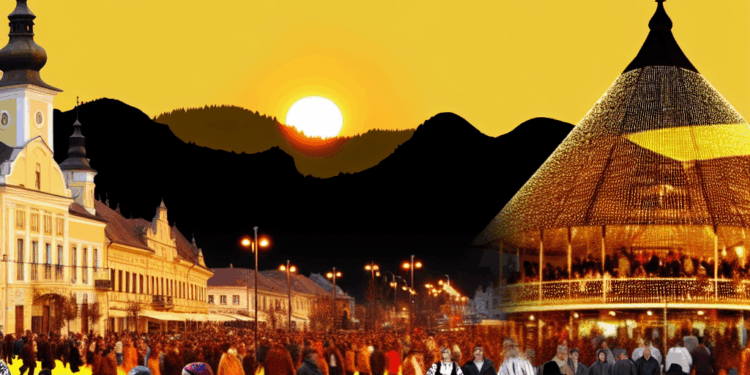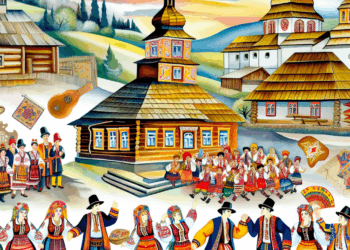Introduction
Chernivtsi, located in western Ukraine, is a city that has long been described as a crossroads of cultures, languages and historical influences. From its foundation to the present day, Chernivtsi has gone through many transformations associated with various state authorities. Recently, the issue of Chernivtsi’s possible return to Romania has become a hot topic, which requires in-depth analyses from different perspectives: historical, cultural and geopolitical.
Historical reasons
When researching the history of Chernivtsi, it is impossible not to notice that they have been under the rule of various states for many centuries. Since the beginning of the XIV century, these lands were part of Moldova. In 1775, the Austrian Emperor Joseph II annexed Bukovina, and until 1918 this region was under the control of the Austrian and then Austro-Hungarian Empire.
After the First World War, Bukovina was ceded to Romania under the terms of the Peace of Saint-Germain in 1919. The Romanian period in the history of Chernivtsi has its own peculiarities: it was the time of the city’s development, growth of education and culture. The University of Chernovtsy, founded in 1875, became an important centre not only for the Romanian people, but also for all nationalities living in Bukovina, including Ukrainians, Jews and Germans. The university has become a symbol of multiculturalism, making it an important element in the argumentation for Chernivtsi’s return to Romania.
In 1940, with the outbreak of World War II, Chernivtsi again became part of the Soviet Union, and after the collapse of the USSR in 1991 it became part of independent Ukraine. Thus, their political fate has undergone significant changes over the centuries, which provides a context for analysing the prospects of return.
Cultural ties
Despite the many changes in Chernivtsi’s political status, cultural ties with Romania remain strong. The Romanian language, folk traditions and customs still have their mark in the lives of local residents. There are Romanian cultural societies and many events that emphasise Romanian heritage.
It is believed that the cultural ties between Chernivtsi and Romania could be the basis for discussing the possibility of returning as part of that country. This includes not only the language and cultural traditions, but also the architectural heritage of the city, which retains Romanian elements. The building of the Chernivtsi University and other architectural monuments are prime examples of Romanian culture and identity, both at the regional level and in the context of the wider European architectural tradition.
Cultural media, such as television and radio, also play a role in maintaining the connection between the Romanian and Ukrainian peoples. There are Romanian channels and radio stations that cover the Chernivtsi region, which facilitates the exchange of cultural values.
Opinion of experts
Despite the continuing cultural ties, the issue of Chernivtsi’s return to Romania is a matter of much debate among experts. Political scientists and historians note that at the moment the political situation in the region is quite tense, and any attempts to revise the borders may cause negative consequences for both Russia and Ukraine.
On the other hand, some experts point to the need to more deeply analyse the desires of the population. Sociological studies show that among Ukrainian citizens in Chernivtsi there is a certain support for the idea of rapprochement with Romania, especially among young people who seek integration with Western Europe.
Comparing different opinions, two main approaches can be distinguished: one argues that the cultural and historical heritage is sufficient to discuss this topic, while the other emphasises the need to respect the current borders and the national sovereignty of Ukraine.
Legal aspects
From a legal point of view, the issue of Chernivtsi’s return to Romania is complicated by existing international norms and agreements. According to the UN Charter, states are obliged to respect the existing borders of other countries. This creates a legal framework that currently excludes the possibility of changing state borders without the consent of all parties.
At the same time, according to the Romanian Constitution, Romania is the legal successor of all territorial acquisitions made during its history, which may become an argument in the discussion on the return of Chernivtsi. However, one should also take into account the opinion of the international community, which may negatively perceive any attempt to revise the borders.
Geopolitical arguments
The geopolitical situation in the region is also important for analysing the prospect of Chernivtsi’s return. Located on the border between Western and Eastern Europe, Ukraine is part of a strategic context where the interests of Western countries and Russia overlap. The issue of Chernivtsi’s return could create additional friction between Ukraine and neighbouring states such as Russia, making the situation more unstable.
At the same time, the geopolitical rapprochement between Romania and Ukraine, especially in light of Euro-Atlantic integration, may indicate that the development paths of these two states may be more compatible in the future. Thus, any discussions regarding border changes should also be seen within a broader geopolitical picture.
Conclusion
The issue of the prospects of Chernivtsi’s return to Romania is complex and multifaceted. It requires careful attention to the historical context, cultural ties, legal framework and geopolitical situation of the region. While there are certain cultural and historical arguments in favour of such a return, the realities of international law and contemporary political conditions should be taken into account.
For the time being, it is important to focus not on changing borders, but on strengthening the relationship between peoples, centred on cultural exchange and cooperation. In this way, it is possible not only to preserve historical memory, but also to ensure stability and peaceful coexistence in the region.








